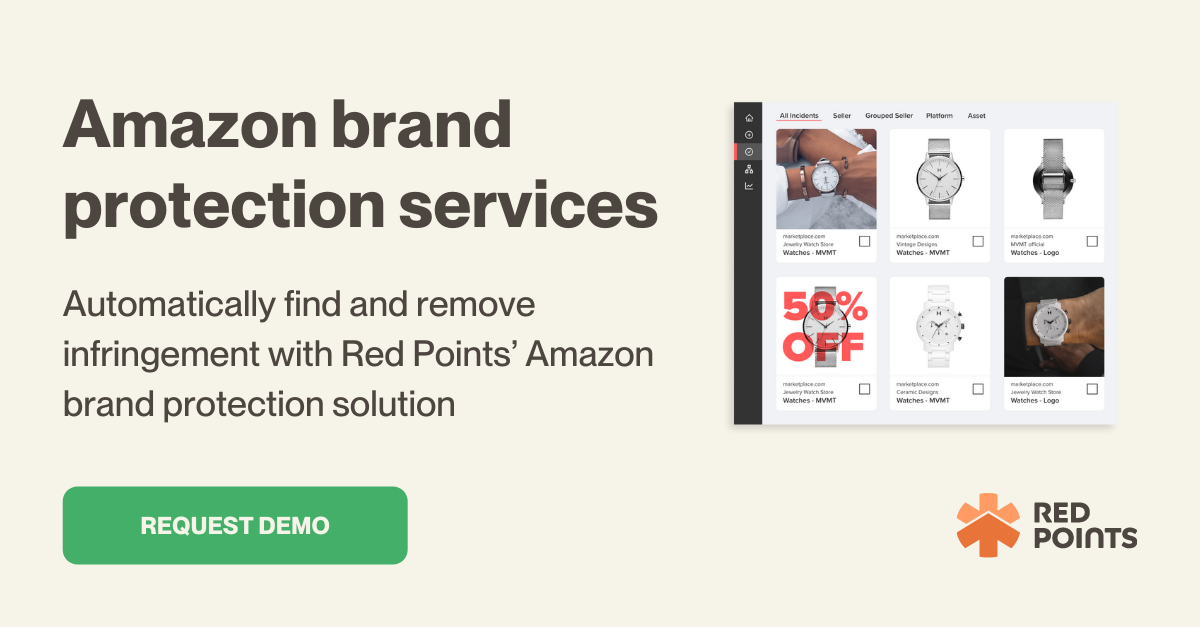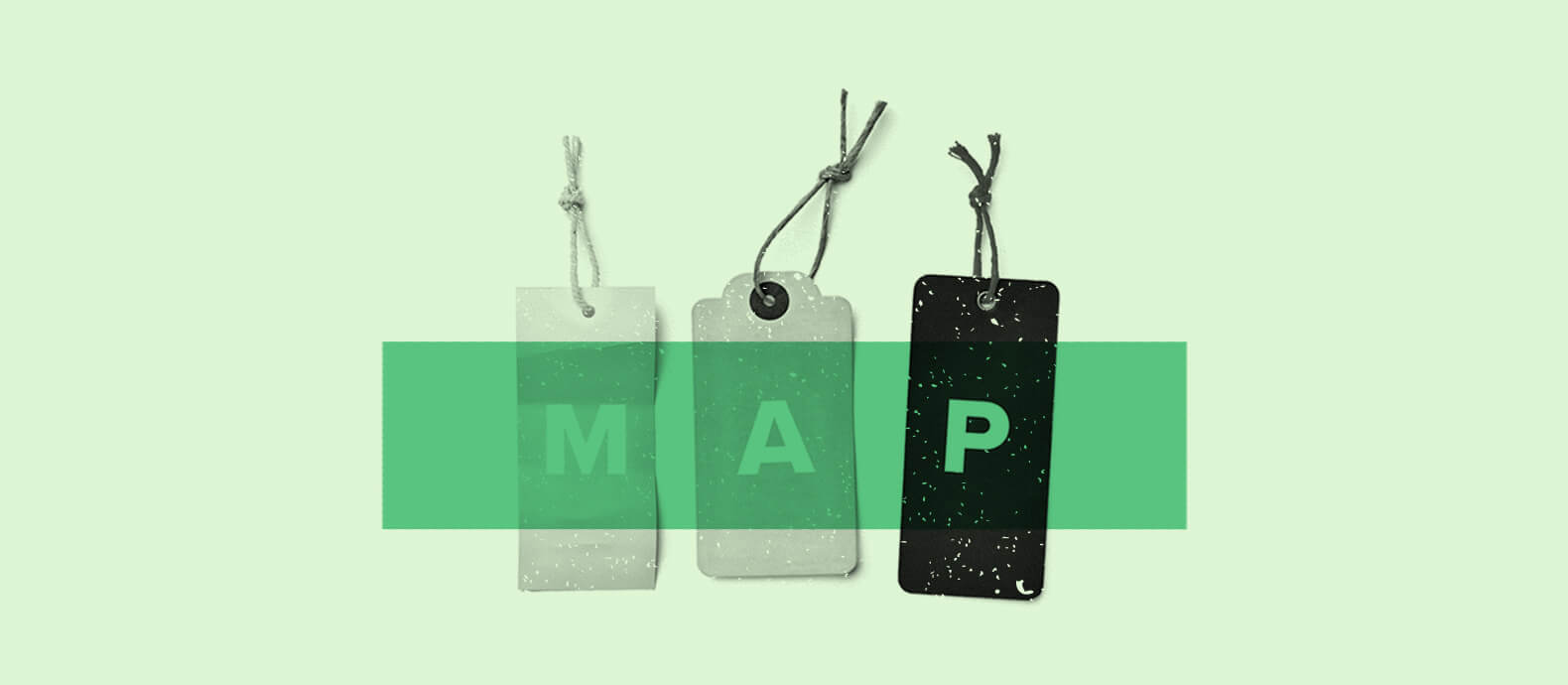The digital marketplace has transformed into an area of intense competition, where brands vie for consumer attention amidst a sea of choices. In this fiercely competitive landscape, adopting dynamic pricing strategies has become a vital tool for brands seeking to carve out a competitive edge.
Grasping the nuances of MAP (Minimum Advertised Price) and MSRP (Manufacturer’s Suggested Retail Price) is key for businesses aiming to strategically price their offerings, safeguard their profit margins, and uphold the integrity of their brand identity.
In this article, we’ll discuss:
- What are MAP and MSRP pricing?
- Is MSRP and MAP the same?
- How to enforce MAP pricing on Amazon MAP violators?

What is MAP pricing?
The Minimum Advertised Price or MAP is the lowest price at which a retailer can advertise a particular product. Set by the manufacturer, the MAP helps protect the brand’s value and profits by ensuring that the products cannot be priced below a pre-decided amount.
For instance, let’s say your brand sells sneakers and you set the MAP pricing for one of the sneakers at $99. That means, no retailers can advertise that pair of sneakers below the $99 threshold, either online or in-store. If a reseller tries to advertise your brand’s product at higher discounts and go below the MAP, they would be in direct violation of your company’s MAP policies and you will be able to take strict action against them.
How is MAP pricing calculated?
Setting your product’s MAP can be a rather challenging task as you need to take into account the interests of numerous groups including brick-and-mortar retailers, online retailers, distributors (if you have any), and target customers. There is no set formula or magic number for coming up with a minimum advertised price since the pricing will differ for each brand depending on their industry, niche, and market position.
Here are some of the factors that you should consider when calculating your MAP:
- It shouldn’t cut down on your own profits in any way.
- It should reflect your brand value, reputation, and the quality that you deliver.
- It should leave enough margin for your resellers and distributors to profit too.
Can you sell below the MAP pricing?
No, you cannot.
The whole idea behind setting up MAP policies is to ensure sellers and retailers do not sell below the brand’s set MAP prices. If a retailer does end up advertising a product below its MAP price, the brand or the manufacturers have the legal right to take strict actions against the retailer and even revoke their authorized seller status.
Is MAP pricing legal in the United States?
Yes, in the United States MAP policies are legal as they fall under the Federal Antitrust Law. However, there can be some variation in different states. It is also important to note that in the EU and UK, minimum pricing is not legal as it is seen as an infringement of the current competition laws of the region.
Does every manufacturer use MAP pricing?
While every manufacturer doesn’t need to use MAP prices, it’s usually recommended for manufacturers to set up MAPs to protect their brand value and margins.
A MAP policy for brands also helps ensure that there is a complete even playing field for all retailers – big and small. That way, retailers aren’t constantly in a price war with each other to make sales which would only lead to your brand’s products getting devalued.
What are the benefits of MAP pricing for manufacturers?
Some of the many benefits of setting MAPs include:
- Improving brand value as your customers see almost the same pricing for products in every online and offline store.
- Allowing retailers to focus on customer service instead of being in a constant price war with other sellers.
- Helping to eliminate bad sellers who are only in it for short-term profits while preserving your relationship with your best-performing retailers.
- Stabilizing your margin and making predicting revenue easier.
What is MSRP?
The Manufacturer’s Suggested Retail Price or MSRP is the sale price for products which is recommended by the manufacturer to the sellers. Also known as the list price or the sticker price, it is designed to keep prices at almost the same level even in different stores.
But it’s important to note that retailers may not always use the MSRP and customers may not always pay the MSRP when buying your products.
As its name states, MSRP is a ‘suggested’ price that the manufacturers or the brands provide. It helps sellers decide on the right selling price for products and it helps customers determine whether they are paying the right price for the products or not. But there is no requirement for sellers to charge the MSRP only.
Sellers may reduce the prices below MSRP when they are trying to move inventory off the shelves or trying to attract more customers during a sale season. Similarly, sellers may set prices higher than MSRP when a product is popular and flying off the shelves quickly.
Are MSRP and MAP the same?
MSRP and MAP are two different types of product pricing.
While MAP prices only consider the lowest price at which the product can be advertised, MSRP is the selling price recommended by brands.
Sellers are expected to comply with MAP policies. Advertising products lower than the MAP can be considered a breach of contract and even instigate legal action by the brand.
On the other hand, MSRP is only a suggested price by brands, and sellers are not expected to follow it. MSRP tells sellers the price the brand expects them to sell its products at. MSRP is like a sign that helps sellers offer the right pricing to their customers.
MAP pricing actually protects the MSRP pricing. For instance, if you are trying to create a premium brand known for its high-quality products, you wouldn’t want your products to be advertised at deep discounts. It can send a message to your target customers that your products are not worth the MSRP at all.
While MAP is the minimum threshold for product pricing, MSRP gives retailers a good estimate of how they can price the products realistically to maintain optimum profit margins.
How to enforce MAP pricing on Amazon MAP violators?
As digital marketplaces like Amazon and eBay continue to dominate ecommerce, their policies regarding MAP enforcement can significantly impact brands. It’s important to stay aware of any new tools or policy changes on these platforms that could affect how MAP violations are detected and addressed.
However, since MAP pricing is an agreement between the manufacturer and seller, it has nothing to do with Amazon and the ecommerce platform doesn’t care about it at all. It’s up to the brands to constantly monitor sellers on Amazon, enforce MAP policies, and actively detect MAP violators.
Automated price tracking and enforcement is a solid way to handle MAP violations before they become a huge problem for your brand. The advent of sophisticated software solutions has also transformed the landscape of MAP policy enforcement. Brands can now leverage advanced monitoring tools that utilize AI and machine learning to track pricing in real time across multiple platforms, identify violations more efficiently, and automate the enforcement process.
Investing in modern solutions can help you protect brand value and maintain pricing integrity in a competitive market. Red Points’ Amazon Brand Protection Services complement this by focusing on unauthorized sellers and counterfeit products on Amazon, ensuring overall brand security and preserving customer trust. This integrated approach not only supports MAP compliance but also extends protection to brand reputation and market presence.
What’s next
Setting the right MAP and MSRP pricing doesn’t just mean stabilized profit margins and improved brand reputation, but it can also help you create long-lasting relationships with sellers and retailers. It’s also just as important to monitor MAP compliance and ensure your sellers are honoring and following MAP policies.
Request a demo to discover how our Amazon Brand Protection Services can enhance your MAP enforcement strategy.






